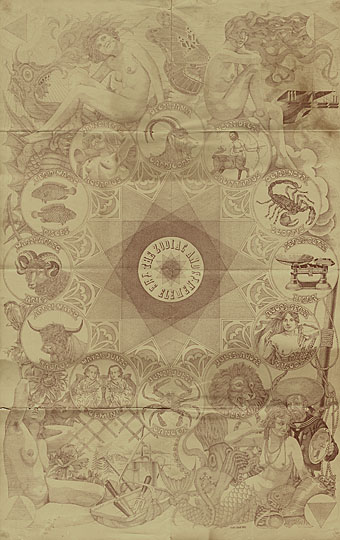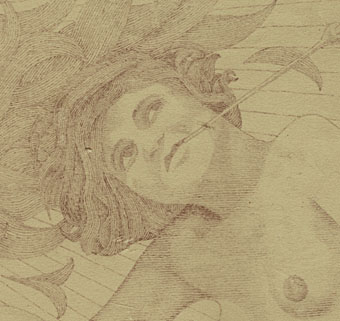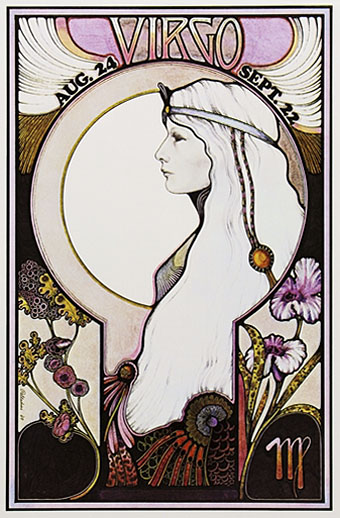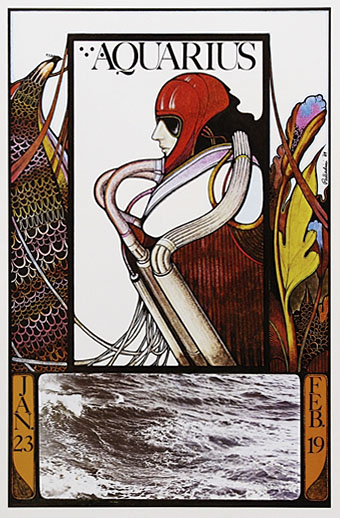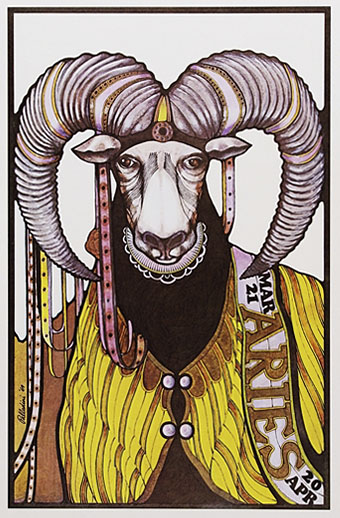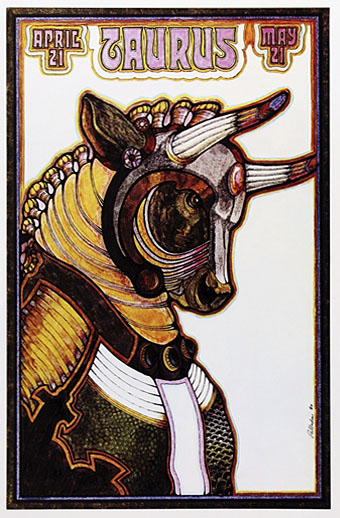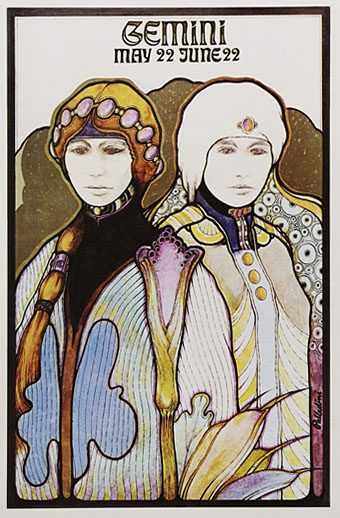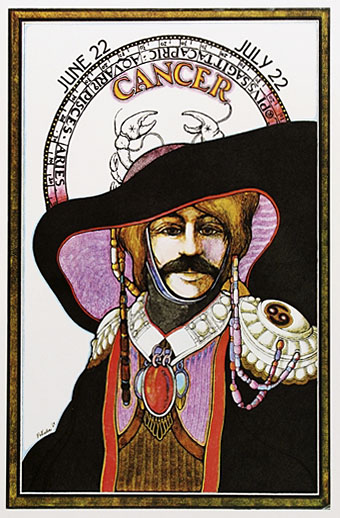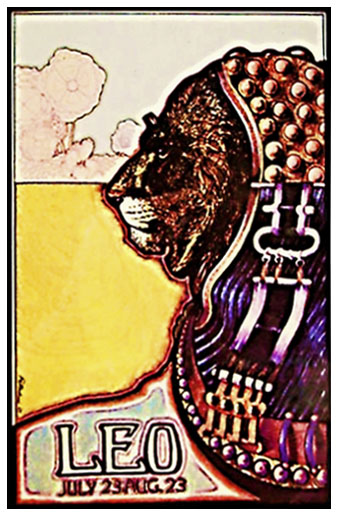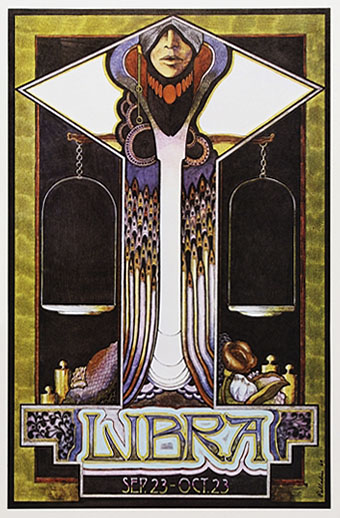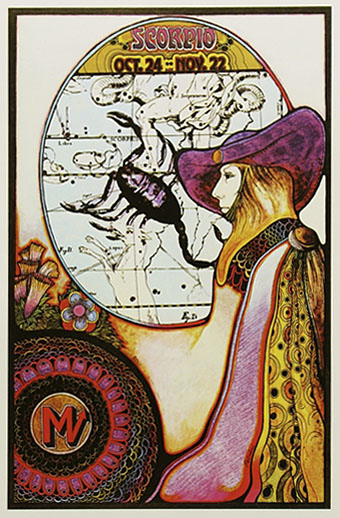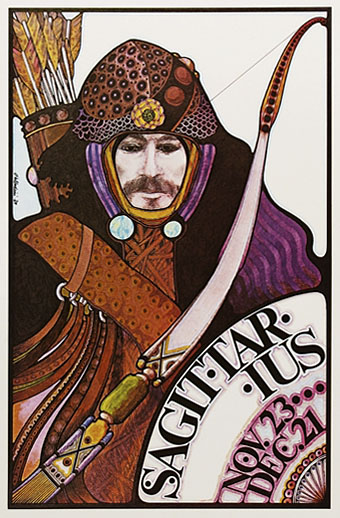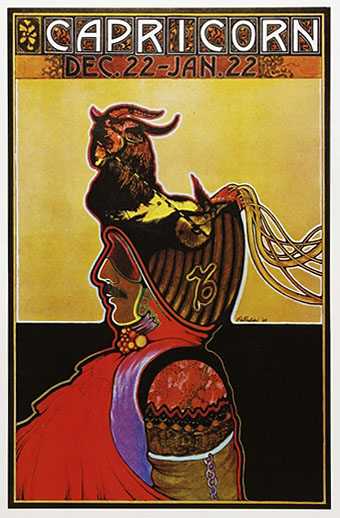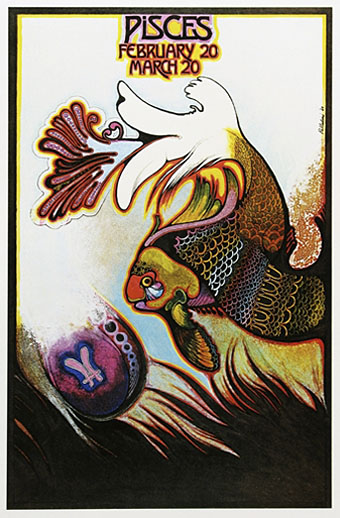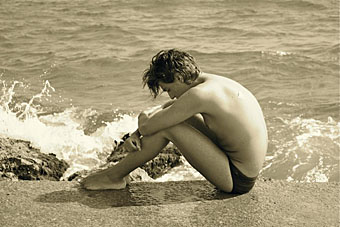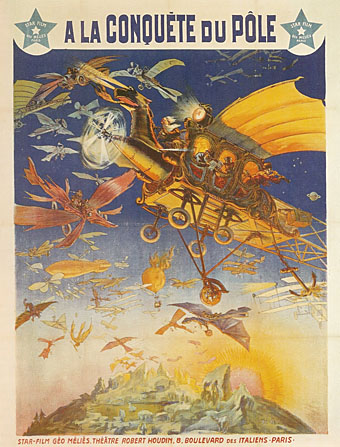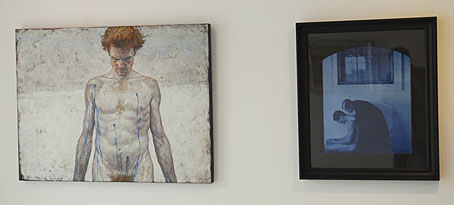
Pictures by Daniel Barkley (left) and John Dugdale (right).
Two exhibitions worthy of note for those in the New York area. Jan Kapera of JKK Fine Arts notified me about a new show he’s curated, Naked Bodies, Naked Souls, currently running at the Loft Gallery in the Delaware Arts Center,
Narrowsburg, NY.
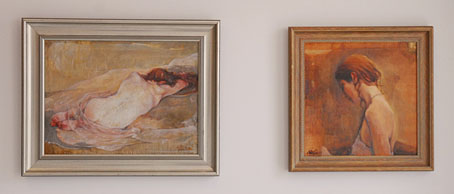
The realm of ‘Naked Bodies, Naked Souls’ is a very private, personal world; a world of artists’ secrets, dreams, feelings, and deepest emotions,” says curator Kapera. “They have expressed the unexpressed—they have found the way to show spiritual and mystical states of soul in dream-like, symbolic images.
This exhibit features the work of 16 international artists: Daniel Barkley (Canadian), Luigi Casalino (Italian), Joanna Chrobak (Polish), John Dugdale (American, NYC), Barbara Falender (Polish), Michel Henricot (French), Michael Kuch (American, MA), Tom Misztal (American, OR), Aleksandra Nowak (American, NJ), Darek Nowakowski (American, NYC), Egidijus Rudinskas (Lithuanian), Krzysztof Skorczewski (Polish), Lubomir Tomaszewski (American, CT), David Vance (American, FL), Damian Wojtowicz (Polish), and Piotr Woroniec (Polish). (More.)
Naked Bodies, Naked Souls runs to September 4, 2010. Thanks to Jan for the photos!

Water Spike (2003) by Daina Krumins.
And by chance this weekend I happened to see news of a forthcoming exhibition of work by artist and filmmaker Daina Krumins, Mind Pixels, at the Barron Arts Center, Woodbridge, NJ.
The Barron Arts Center is located at 582 Rahway Avenue in Woodbridge. Admission is free and everyone is welcome to attend. The “Mind Pixels” exhibition features photomontages, sculpture and films by surrealistic artist Daina Krumins. The exhibit opens on Aug. 21 and runs until Sept. 15. Gallery hours are Monday through Friday, 11 a.m.-4 p.m.; Saturday and Sunday 2-4 p.m. The public is also invited to attend the opening reception on Sunday, Aug. 22 from 2-4 p.m. Light refreshments will be served and reservations are suggested. (More.)
As part of the exhibition three of Krumins’ very strange animated films will be given a rare screening this Thursday, August 26. One of the three is Babobilicons, her epic filming of the activity of slime moulds and stinkhorn mushrooms. I’ve been intrigued by the sound of this for several years (see an earlier post about the film) but have yet to see it so anyone in Woodbridge is in a fortunate position this week.
Previously on { feuilleton }
• Babobilicons by Daina Krumins
• Saint Sebastian in NYC

